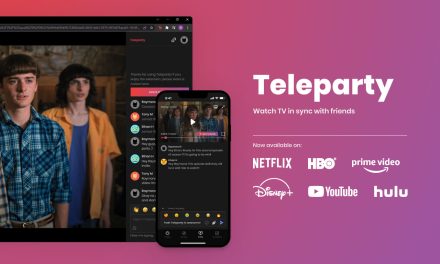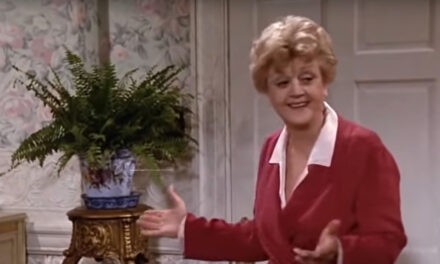Inspired by the countless reviews of 2013 in the New Year press, I started thinking what the best new TV of the last year had been. This is what I came up with. As well as being slightly self-indulgent, it’s also somewhat idiosyncratic. My choices are all drama. With one exception, they all have fantasy elements, and that one exception is definitely TV horror.
Before starting to list my Top 5, I have to mention the Doctor Who anniversary. Clearly, a series that has recently celebrated its fiftieth anniversary can’t be counted as new TV but for me and many others, this was a major part of the 2013 TV calendar. While the anniversary hype may have got a little too much at times, the extra programmes marking the anniversary offered a satisfying range. The Day of the Doctor, simulcast around the world and shown in cinemas across the UK was enjoyable, but expected: An Adventure in Space and Time and The Five(ish) Doctors Reboot rounded out the picture. Both these ‘extras’ celebrate the production history of Doctor Who. An Adventure in Time and Space highlights the contributions of Verity Lambert, Waris Hussein and Sydney Newman as well as William Hartnell, and the docudrama format allows it to present the history of the series’ early years with a nicely-judged sense of nostalgia and affection, as might be anticipated from writer Mark Gatiss. The Five(ish) Doctors, written and directed by Peter Davison, is a hilarious romp charting the attempts of actors who played the ‘classic’ Doctors, led by Davison, to crash the anniversary episode they haven’t been invited to join. Including a plethora of contributors to the extended universe of Doctor Who, The Five(ish) Doctors offers wonderful self-parodies from all involved with many choice moments packed into its 31 minutes. After all the hype, it’s great to see such awareness, and to see the less successful years of Doctor Who, as well as its extended universe, included in this celebration.

Sleepy Hollow is the first of my Top 5. Based on the tale of the title, it revives Ichabod Crane and the headless horseman in the twenty-first century and is clearly following other fairytale TV dramas like Once Upon a Time and Grimm in doing so. It’s been something of a runaway hit for Fox after a great pilot episode and it definitely has a winning formula for mainstream network TV drama. However much you predict the weekly protagonist-out-of-time joke, it still makes you laugh because (a) it’s always funny and (b) the writers are not aiming to make us laugh at Crane but to appreciate his different take on our contemporary world (‘we wanted him to appear very wise’ says Damian Kindler). But the main reason it makes my Top 5 of 2013 is that, while it features a dead (well, resurrected) white European male as one of two main protagonists, he’s really the only regular white character (not including the recurring character of his dead wife).

This is still unusual for US network TV and something that leads to ‘a refreshingly candid attitude towards race’, as one press article notes, as well as snippy comments about George Washington and other founding fathers. This is never taken too far, though: by turns comic, self-conscious, and creepy, Sleepy Hollow is always highly entertaining.
Les Revenants [The Returned]
Unlike other non-English language imports that have enjoyed success outside their domestic markets, such as Engrenages, Bron or Borgen, Les Revenants doesn’t fit easily into genre categories such as crime or political drama. While described by some as zombie TV, the revenants are not zombies, as Catherine Johnson points out, and it’s more art than horror (Eric Gould describes it as ‘a kind of scripted performance art and as close to a literary experience as television can provide’). In this sense, and in how it handles its premise, it is innovative television. Rather than a post-apocalyptic world, exploding zombie heads, or plucky protagonists avoiding being bitten, this series deals with grief and mourning, with how people remember the dead, cope with loss and move on—or don’t.

Like other European imports, it’s slow TV, savouring the drama, the artistic direction, and the slow spinning out of the story. Add influences from Twin Peaks and a superb soundtrack by Mogwai and Les Revenants is beautiful, thought-provoking and appropriately haunting.
American Horror Story: Coven
This is a cheat, admittedly, because American Horror Story is not a new series but as anyone who’s watched it knows, this ‘anthology’ show retains some of its key actors but changes the setting, the focus and the characters each season. So I’m including this third season, Coven, which switches between a present day coven of witches in New Orleans and a range of periods via flashback. Coven offers even more great parts for women than previous seasons, and older women at that (see Janani Subramanian’s article in the Autumn volume of Critical Studies in Television). Having Jessica Lange, Kathy Bates and Angela Bassett all in one series, with Frances Conroy playing a recurring character, gives four major roles to women over 55, with three of them over 60.

Coven has so far focused on power, inflected by race, class and gender. Plus, a self-resurrected witch who’s a major Stevie Nicks fan—where else but the delicious and delirious AHS?
In the Flesh
At only three episodes this BBC Three series was intense, though season two (coming this year) will be longer. Like Being Human and Misfits before it, In the Flesh takes British social realism and adds a dash of the supernatural (it’s ‘more kitchen sink drama than the zombie gore-fest of The Walking Dead’, as Johnson’s blog on undead TV puts it). A little like Les Revenants this series shows a small community dealing with its returning dead—but these dead are only ‘partially deceased’. The whole notion that zombies can be rehabilitated to become Partially Deceased Syndrome sufferers is so perfect that this premise alone would have made the show gripping. The inane bureaucracy and politically correct jargon makes In the Flesh utterly believable, as do the character interactions. We’ve had zombie apocalypses before, in the movies and on TV. But this isn’t the end of the world, it’s reconstruction, or post-crisis, at least. Writer Dominic Mitchell, admits he is asking, ‘What happens after the enemy isn’t deemed the enemy anymore? What would happen then?’ Seeing the main character, Kieren, as both a mouldering undead ‘zombie’ and a too-perfectly made-up rehabilitated son and brother is more disturbing than hordes of flesh eaters.


Likewise, the bigotry and intolerance of the local community, especially those members of the Human Volunteer Force who fought the ‘rotters’ in the zombie uprising (now including Kieren’s younger sister), is all too credible and even understandable. These zombies aren’t all ravening, shambling (or running) mindless monsters. Some remember they are people. Vampire stories have been doing this for some time. Zombies, of course, are less cut out to be dark, romantic heroes seeking redemption but In The Flesh makes this work, in a strikingly effective kitchen sink gothic fashion. It also constantly surprised with subtle shifts in direction, never quite going where the viewer expected. Season two is one of my must-see series for 2014.
Hannibal
Douglas Howard’s blog from June called it ‘the most compelling show on television’ and Hannibal was definitely top of my list for last year. Understandably it’s not for everyone and definitely not for the squeamish: the official NBC trailer on YouTube has an advisory about the content (http://www.youtube.com/watch?v=Hride8sAhBY). Hannibal is compelling TV because it is distinctive, engaging and consistent. Bates Motel paled in comparison, despite both series effectively attempting to offer backstory for a famous fictional serial killer. Hannibal lets us ride for about half the first season on this knowledge alone. Is Dr Lecter as sinister as he seems, or is it just our foreknowledge that makes him seem so? And how long before Will Graham works out that Hannibal is not what he appears?
The style of the series showcased Bryan Fuller’s talents. Fuller’s series always have their own look and this is no exception. Dark and brooding, mixing dreams and reality, Hannibal delivers macabre spectacle and keeps viewers visually enthralled, if slightly on edge, throughout. Hannibal’s sartorial, slightly retro, elegance is an added bonus (double Windsor, anyone?). Fuller’s last series, Pushing Daisies (2007-2009) gives us a ‘body of the week’ in a playful, comedic and colourful way; Hannibal does it more seriously, and more graphically. Moreover, in Pushing Daisies the weekly crimes are solved and last requests of the dead are sometimes even carried out. Hannibal superficially appears to offer the same context: Will is a special FBI agent, after all, and he does clear a number of cases. But one of the disturbing things about Hannibal (and there are many) is the way its bodies are not even victims, they’re just meat. Or art (see Stacey Abbot’s blog on television mise en scene). Not people. Not even crimes. Will may solve the crimes and some killers may be caught, but this rarely offers resolution, because the story is not their story. We never find much out about either the victims or the killers (the ones that aren’t Hannibal). Solving a crime here does not result in closure.

Will profiles the scenes and the killers but we never even really know if he’s right in his speculation about what happened. Increasingly, he seems to be the real victim.
And, by the way, despite the plethora of dead women/ men who kill on TV, Hannibal is fairly equal opportunities. Gender doesn’t matter if the bodies are just meat.

Everyone is playing a game. As each carefully composed shot suggests, Hannibal is all about manipulation. It’s dark, brooding and disturbing. Hungry for more? Absolutely.
Lorna Jowett is a Reader in Television Studies at the University of Northampton. She is the co-author with Stacey Abbott of TV Horror: Investigating The Dark Side of the Small Screen (2013) and author of Sex and the Slayer: A Gender Studies Primer for the Buffy Fan (2005). She is currently co-editing a collection about Time on TV.




